
On Tuesday, it was announced that four newly discovered Himalayan peaks near Gangotri Glacier would be named after former Indian Prime Minister, the late Atal Bihari Vajpayee. This came a day after it was announced that Congress would field Vajpayee's niece Karuna Shukla for the Rajnandgaon seat as its candidate against Chhattisgarh Chief Minister Raman Singh.
The two developments aren’t interlinked, of course, but symbolise the former Indian premier’s towering stature and the fact that his political persona wasn’t limited to the Bharatiya Janata Party, respectively.
Last Tuesday the state cabinet in the BJP led Uttar Pradesh announced the renaming of Allahabad as Prayagraj. The move is being interpreted as the increasingly Hindu nationalist BJP’s latest ‘anti-Muslim’ manoeuvre.
Given the current BJP government’s legacy includes a surge in beef lynching and violence in Indian-administered Kashmir, it is understandable why Muslims in India are increasingly feeling under siege.
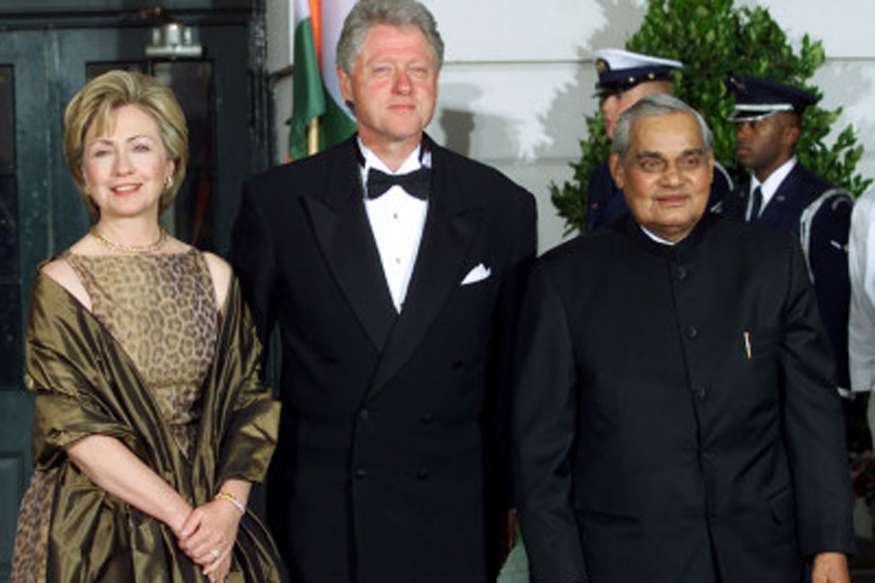
As the line between Bharatiya Janata Party and Rashtriya Smayamsevak Sangh continues to increasingly blur, many instinctively launch into the throwback to the Vajpayee years ostensibly to delineate a different past for the BJP.
Following his death two months ago, such symbolic revisiting has further increased, prompting discussions on whether Vajpayee actually did represent a different BJP and India.
Reconciliatory renditions
If there’s one word that would go the furthest in defining Atal Bihari Vajpayee, it would be ‘reconciliation’.
Whether it was Sanatan Dharma of his family with the more aggressive religionist ideology of the Rashtriya Smayamsevak Sangh that had caught his fancy in his teens, his passion for reading with his sense of duty towards the Indian freedom fight, his leadership of the Jana Sangh with statecraft that necessitated post 1971 approbation for Indira Gandhi or the Hindutva ideology with Gandhian socialism for the creation of BJP – Vajpayee’s life was a quest to merge contrasts that often spread out to extreme proportions.
Fitting then that all three of his varying stints as the Indian Prime Minister were brought about by BJP leading a collage of parties, with Vajpayee’s trademark reconciliatory politics keeping the constituents glued together.
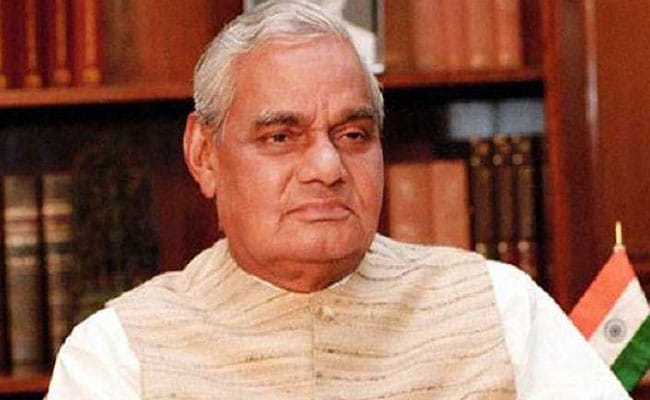
On August 16, however, Vajpayee lost a decade long fight to reconcile life and death. And he departed for his final abode, amidst almost universal tribute for a glittering political career that earned the BJP founder the two highest Indian civilian awards Padma Vibhushan and Bharat Ratna over two decades apart.
Man of letters
Vajpayee was a man of letters. This he exhibited throughout his lifetime from his work as journalist at Rashtradharma, Panchjanya, and Daily Milap in the 1940s to his writings on foreign policy or the oft-cited poetry that he has recited in as varying settings as a kidney operation at a New York hospital or during peace overtures at Lahore’s Governor House.
It was his way with words that attracted figures as antipodal as Syama Prasad Mukherjee and Jawaharlal Nehru. It was this very skill that made him an inalienable cog of the Janata Party coalition that won the 1977 elections, resulting in Vajpayee’s stint as the Minister for External Affairs.

And hence it is no coincidence that for a man so well versed with a line in multiple languages always ready to fit the occasion, the darkest chapters of Vajpayee’s legacy are scribed by his silence.
Deafening silence
The Liberhan Commission held 28 persons responsible for the demolition of the Babri Mosque, including Vajpayee. At a time when L K Advani was the more ‘radical’ face of the BJP, Vajpayee’s moderate billing was put to test with his address to kar sevaks – still available on YouTube – the day before the attack, hinting at the very least of a knowledge of what was to transpire in Ayodha on December 6, 1992.
While Vajpayee was ‘told to be in New Delhi’ on the fateful day, he was similarly ‘told’ to stop pursuing the sacking of Narendra Modi for his role as the then Chief Minister during the 2002 Gujarat Riots.
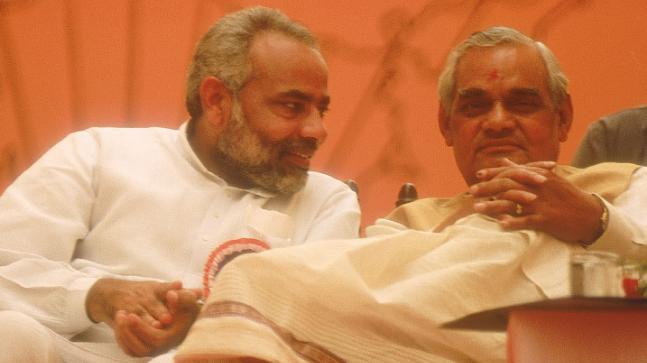
These two incidents and the lack of affirmative action on his part are glaring blots on decades’ worth of unrelenting pursuit of peace. And it is this quest that he expanded to the entire South Asian region that gave him the reputation of a peacenik in our neck of the woods.
Peace yatra
His time as the Prime Minister of India between 1996 and 2004 saw multiple incidents that defined domestic and regional politics of the South Asian rivals, including Lahore yatra of 1999 and the Agra Summit of 2001, sandwiched between which was the Kargil War.
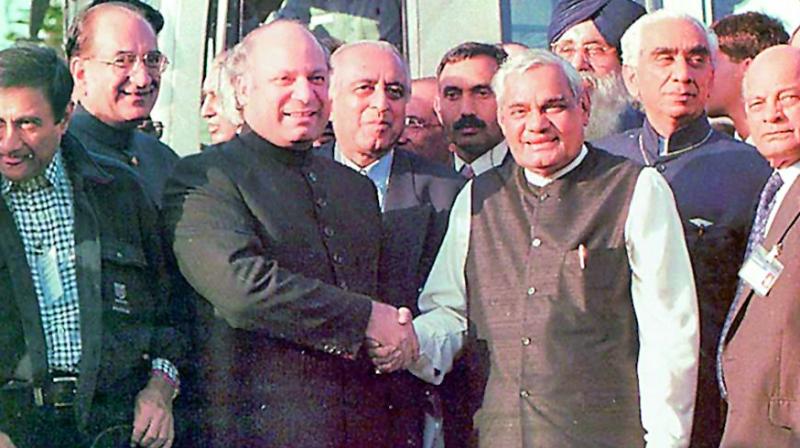
“As Prime Minister of India, Atal Bihari Vajpayee, was a keen advocate of peaceful relations with Pakistan. Known for his courage and conviction, Vajpayee had offered that hope when he made the journey to Lahore in February 1999 soon after the two countries had tested their nuclear bombs. It was a statesmanlike gesture to cool regional temperatures and to signal to the world that the region was nuclear responsible and mature,” recalls the former head of the Research & Analysis Wing, Vikram Sood, who served as the Indian intelligence chief from 2000 to 2003.
“General Musharraf however chose to act differently and his brutal Kargil misadventure was a stab in the back for Vajpayee in particular. This left the future of bilateral relations in jeopardy. The hijack of the IC 814 in December 1999 soured relations further. Yet, it was Vajpayee's uncommon courage that led him to invite General Musharraf for peace talks in Agra in 2001. However, Musharraf's press conference by stealth accompanied by shrill bravado helped ruin everything.
“Even after the December 2001 terrorist attack on the Indian Parliament followed by total mobilisation of Indian troops in 2002, Vajpayee made a last attempt in January 2004 while on a visit to Islamabad. But Indian overtures and violent Pakistani responses were becoming domestically unsustainable in an election year in India.”
Pakistan perspective
Khurshid Kasuri, author of Neither a Hawk Nor a Dove, then Foreign Minister of Pakistan, recalls the apprehensions surrounding Vajpayee’s 2004 visit.
“Vajapayee had come to Pakistan for the SAARC summit, but we still weren’t sure whether there would be a bilateral meeting between him and President Musharraf, because such things are decided in advance on the phone,” he said. “The meeting however did take place and was a breakthrough in many ways. The picture that was released of the two leaders shaking hands was dubbed ‘the handshake that changed history’ by the international media.”
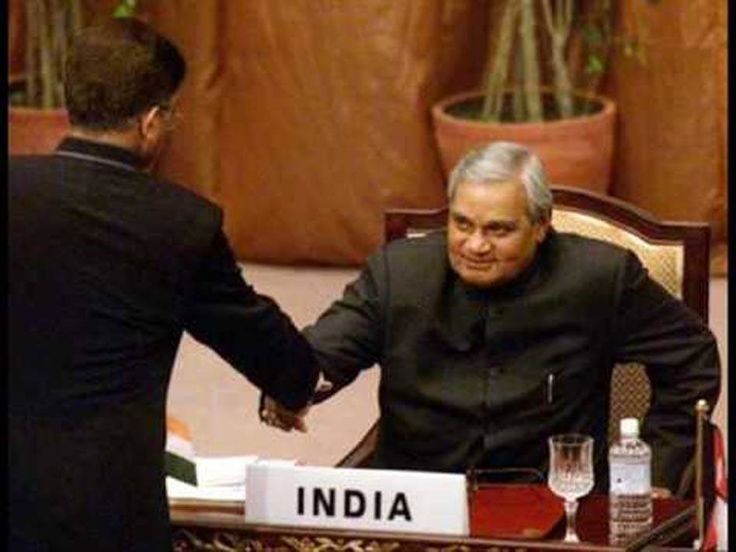
Kasuri also remembered a taste of the renowned wit of the then Indian premier. “Following his visit to the Minar-e-Pakistan, Vajpayee told us that the BJP leadership back home was being incredibly critical of the Indian premier visiting a site that was an emblem of Pakistan’s creation, accusing Vajapayee of ‘stamping Pakistan’. Vajpayee said, ‘I told them Pakistan did not need my stamp approval. It has long been a reality.’”
Kasuri said the BJP’s defeat in the 2004 elections came as a shock to the then Pakistani leadership.
“We were confident that with Vajpayee at the helm we would’ve reached a breakthrough on Kashmir that was acceptable to all, and addressed other bilateral issues as well. But the Congress government that following didn’t seem particularly interested in resolving the bilateral issues.”
Moving on
The 2004 election defeat came as a shock to Vajpayee himself as well. The three time Indian PM was of the opinion that resolution of the Kashmir dispute was likeliest to be resolved under a military dictator like Musharraf since he didn’t have to worry about losing any vote banks.
Similarly, there is an opinion in Islamabad and among Kashmiri nationalists that a right-wing party is likelier to cede ground on Kashmir than the secular Congress, considering its historical narrative.
As the Congress led United Progressive Alliance formed the government in 2004, Vajpayee called for younger faces to come forward at the BJP throwing the gauntlet at Advani and Pramod Mahajan to be the new ‘Ram-Laxman’ of the party. In December 2005 he announced his formal retirement from politics, taking up an honorary role at the BJP, which he was too ill to perform after being admitted to the All India Institute of Medical Sciences, Delhi (AIIMS) following a chest infection and fever in February 2009, after which he was put on a ventilator.
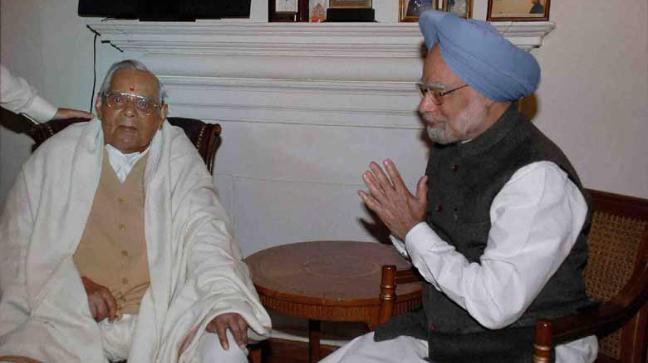
Ode to contrasts
Vajpayee wrote hundreds of poems, 51 of which are compiled in his literary magnum opus Meri Ekyavan Kavitayen. It is one of his renowned poems Geet Naya Gaata Hoon that best describes the struggles within as he carried a reformist approach to pretty much everything that he indulged in.
‘Chaurahay par lutta cheer
Piyaday se pit gaya wajir
Chaloon aakhri chaal ki bazi chhor
Virakti rachaun main
Rah kaunsi jaun main?’
[Modesty is being enraged openly
The pawn has beaten the queen,
Should I take one last gambit,
Or leave it all
Which path do I take?]
‘Haar nahin manoonga
Raar nayi thanoonga
Kal ke kapal par likhta, mitata hoon
Geet naya gata hoon.’
[I will not accept defeat
And will start the struggle afresh.
I will write and unwrite my own destiny
And sing a new tune]
The two developments aren’t interlinked, of course, but symbolise the former Indian premier’s towering stature and the fact that his political persona wasn’t limited to the Bharatiya Janata Party, respectively.
Last Tuesday the state cabinet in the BJP led Uttar Pradesh announced the renaming of Allahabad as Prayagraj. The move is being interpreted as the increasingly Hindu nationalist BJP’s latest ‘anti-Muslim’ manoeuvre.
Given the current BJP government’s legacy includes a surge in beef lynching and violence in Indian-administered Kashmir, it is understandable why Muslims in India are increasingly feeling under siege.

As the line between Bharatiya Janata Party and Rashtriya Smayamsevak Sangh continues to increasingly blur, many instinctively launch into the throwback to the Vajpayee years ostensibly to delineate a different past for the BJP.
Following his death two months ago, such symbolic revisiting has further increased, prompting discussions on whether Vajpayee actually did represent a different BJP and India.
Reconciliatory renditions
If there’s one word that would go the furthest in defining Atal Bihari Vajpayee, it would be ‘reconciliation’.
Whether it was Sanatan Dharma of his family with the more aggressive religionist ideology of the Rashtriya Smayamsevak Sangh that had caught his fancy in his teens, his passion for reading with his sense of duty towards the Indian freedom fight, his leadership of the Jana Sangh with statecraft that necessitated post 1971 approbation for Indira Gandhi or the Hindutva ideology with Gandhian socialism for the creation of BJP – Vajpayee’s life was a quest to merge contrasts that often spread out to extreme proportions.
Fitting then that all three of his varying stints as the Indian Prime Minister were brought about by BJP leading a collage of parties, with Vajpayee’s trademark reconciliatory politics keeping the constituents glued together.

On August 16, however, Vajpayee lost a decade long fight to reconcile life and death. And he departed for his final abode, amidst almost universal tribute for a glittering political career that earned the BJP founder the two highest Indian civilian awards Padma Vibhushan and Bharat Ratna over two decades apart.
Man of letters
Vajpayee was a man of letters. This he exhibited throughout his lifetime from his work as journalist at Rashtradharma, Panchjanya, and Daily Milap in the 1940s to his writings on foreign policy or the oft-cited poetry that he has recited in as varying settings as a kidney operation at a New York hospital or during peace overtures at Lahore’s Governor House.
It was his way with words that attracted figures as antipodal as Syama Prasad Mukherjee and Jawaharlal Nehru. It was this very skill that made him an inalienable cog of the Janata Party coalition that won the 1977 elections, resulting in Vajpayee’s stint as the Minister for External Affairs.

And hence it is no coincidence that for a man so well versed with a line in multiple languages always ready to fit the occasion, the darkest chapters of Vajpayee’s legacy are scribed by his silence.
Deafening silence
The Liberhan Commission held 28 persons responsible for the demolition of the Babri Mosque, including Vajpayee. At a time when L K Advani was the more ‘radical’ face of the BJP, Vajpayee’s moderate billing was put to test with his address to kar sevaks – still available on YouTube – the day before the attack, hinting at the very least of a knowledge of what was to transpire in Ayodha on December 6, 1992.
While Vajpayee was ‘told to be in New Delhi’ on the fateful day, he was similarly ‘told’ to stop pursuing the sacking of Narendra Modi for his role as the then Chief Minister during the 2002 Gujarat Riots.

These two incidents and the lack of affirmative action on his part are glaring blots on decades’ worth of unrelenting pursuit of peace. And it is this quest that he expanded to the entire South Asian region that gave him the reputation of a peacenik in our neck of the woods.
Peace yatra
His time as the Prime Minister of India between 1996 and 2004 saw multiple incidents that defined domestic and regional politics of the South Asian rivals, including Lahore yatra of 1999 and the Agra Summit of 2001, sandwiched between which was the Kargil War.

“As Prime Minister of India, Atal Bihari Vajpayee, was a keen advocate of peaceful relations with Pakistan. Known for his courage and conviction, Vajpayee had offered that hope when he made the journey to Lahore in February 1999 soon after the two countries had tested their nuclear bombs. It was a statesmanlike gesture to cool regional temperatures and to signal to the world that the region was nuclear responsible and mature,” recalls the former head of the Research & Analysis Wing, Vikram Sood, who served as the Indian intelligence chief from 2000 to 2003.
“General Musharraf however chose to act differently and his brutal Kargil misadventure was a stab in the back for Vajpayee in particular. This left the future of bilateral relations in jeopardy. The hijack of the IC 814 in December 1999 soured relations further. Yet, it was Vajpayee's uncommon courage that led him to invite General Musharraf for peace talks in Agra in 2001. However, Musharraf's press conference by stealth accompanied by shrill bravado helped ruin everything.
“Even after the December 2001 terrorist attack on the Indian Parliament followed by total mobilisation of Indian troops in 2002, Vajpayee made a last attempt in January 2004 while on a visit to Islamabad. But Indian overtures and violent Pakistani responses were becoming domestically unsustainable in an election year in India.”
Pakistan perspective
Khurshid Kasuri, author of Neither a Hawk Nor a Dove, then Foreign Minister of Pakistan, recalls the apprehensions surrounding Vajpayee’s 2004 visit.
“Vajapayee had come to Pakistan for the SAARC summit, but we still weren’t sure whether there would be a bilateral meeting between him and President Musharraf, because such things are decided in advance on the phone,” he said. “The meeting however did take place and was a breakthrough in many ways. The picture that was released of the two leaders shaking hands was dubbed ‘the handshake that changed history’ by the international media.”

Kasuri also remembered a taste of the renowned wit of the then Indian premier. “Following his visit to the Minar-e-Pakistan, Vajpayee told us that the BJP leadership back home was being incredibly critical of the Indian premier visiting a site that was an emblem of Pakistan’s creation, accusing Vajapayee of ‘stamping Pakistan’. Vajpayee said, ‘I told them Pakistan did not need my stamp approval. It has long been a reality.’”
Kasuri said the BJP’s defeat in the 2004 elections came as a shock to the then Pakistani leadership.
“We were confident that with Vajpayee at the helm we would’ve reached a breakthrough on Kashmir that was acceptable to all, and addressed other bilateral issues as well. But the Congress government that following didn’t seem particularly interested in resolving the bilateral issues.”
Moving on
The 2004 election defeat came as a shock to Vajpayee himself as well. The three time Indian PM was of the opinion that resolution of the Kashmir dispute was likeliest to be resolved under a military dictator like Musharraf since he didn’t have to worry about losing any vote banks.
Similarly, there is an opinion in Islamabad and among Kashmiri nationalists that a right-wing party is likelier to cede ground on Kashmir than the secular Congress, considering its historical narrative.
As the Congress led United Progressive Alliance formed the government in 2004, Vajpayee called for younger faces to come forward at the BJP throwing the gauntlet at Advani and Pramod Mahajan to be the new ‘Ram-Laxman’ of the party. In December 2005 he announced his formal retirement from politics, taking up an honorary role at the BJP, which he was too ill to perform after being admitted to the All India Institute of Medical Sciences, Delhi (AIIMS) following a chest infection and fever in February 2009, after which he was put on a ventilator.

Ode to contrasts
Vajpayee wrote hundreds of poems, 51 of which are compiled in his literary magnum opus Meri Ekyavan Kavitayen. It is one of his renowned poems Geet Naya Gaata Hoon that best describes the struggles within as he carried a reformist approach to pretty much everything that he indulged in.
‘Chaurahay par lutta cheer
Piyaday se pit gaya wajir
Chaloon aakhri chaal ki bazi chhor
Virakti rachaun main
Rah kaunsi jaun main?’
[Modesty is being enraged openly
The pawn has beaten the queen,
Should I take one last gambit,
Or leave it all
Which path do I take?]
‘Haar nahin manoonga
Raar nayi thanoonga
Kal ke kapal par likhta, mitata hoon
Geet naya gata hoon.’
[I will not accept defeat
And will start the struggle afresh.
I will write and unwrite my own destiny
And sing a new tune]
